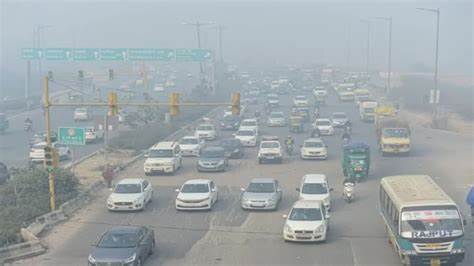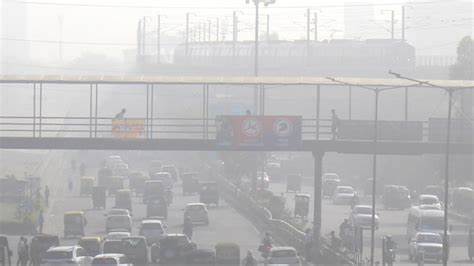Delhi’s Pollution Woes Persist Despite Fewer Farm Fires – The Mystery Unveiled

Delhi, often ranked among the world’s most polluted capital cities, faces a complex mix of factors contributing to its deteriorating air quality. These include geography, vehicular density, dust, and farm fires. However, an often underestimated influence is the weather.
Despite a significant reduction in farm fires in Punjab this year, Delhi’s air quality has reached its worst levels since 2020. Data from the Central Pollution Control Board (CPCB) reveals that the average Air Quality Index (AQI) in the city stood at 210 between October 1 and October 29, second only to the 257 recorded in October 2020. So, what’s causing the rise in toxic air, despite lower pollutant inputs? The answer lies in the lack of rain.
In October 2022, when the average AQI was 198, Delhi experienced six rainy days. In 2021, with the city recording its best October air quality, the average AQI was 166, and there were seven rainy days.
Post-monsoon, the primary pollutant in Delhi is particulate matter (PM 2.5 and PM 10). Rain can wash away these particles, improving air quality. In 2021 and 2022, Delhi saw over 120 mm of rain in October, but this year, rain was limited to 5.4 mm on October 17, with clear skies since.
Moreover, morning temperatures have been decreasing in recent days. While there was a minimum of 16.3 degrees Celsius on Sunday, which is normal for the season, Saturday saw the lowest temperature of the season at 14.3 degrees Celsius. The maximum temperature on Sunday was recorded at 33.4 degrees Celsius, two degrees above normal.

The lack of rain and calm winds are causing pollutants to accumulate, further exacerbated by decreasing temperatures, limiting the dispersion of pollutants. Unfortunately, there is no rain in the forecast for the coming week, suggesting that pollutant concentrations are likely to rise.
Additionally, the Punjab Pollution Control Board has noted that the paddy harvest is ongoing, and the number of fires could increase in the coming days as the time to sow wheat approaches, potentially worsening air quality.





在这里下载Telegram官网最新版,适用于所有主流操作系统。本站为你提供详细的纸飞机使用指南,包括如何下载、安装以及设置中文界面,帮助你轻松使用这一全球领先的通讯 https://www.telegrambbs.com
有道词典是由网易有道出品的全球首款基于搜索引擎技术的全能免费语言翻译软件。简介. 支持中文、英语、日语、韩语、法语、德语、俄语、西班牙语、葡萄牙语、藏语、西语等109种语言翻译。拍照翻译、语音翻译、对话翻译、在线翻译、离线翻译更顺畅。更多的翻译 https://www.fanyim.com